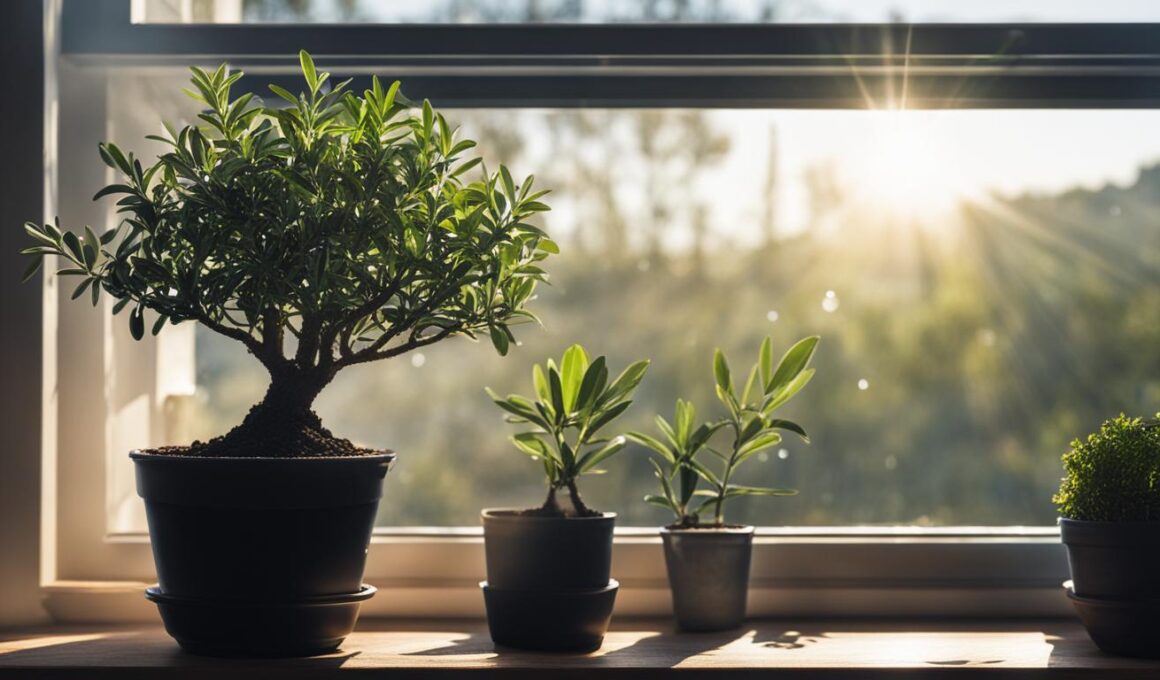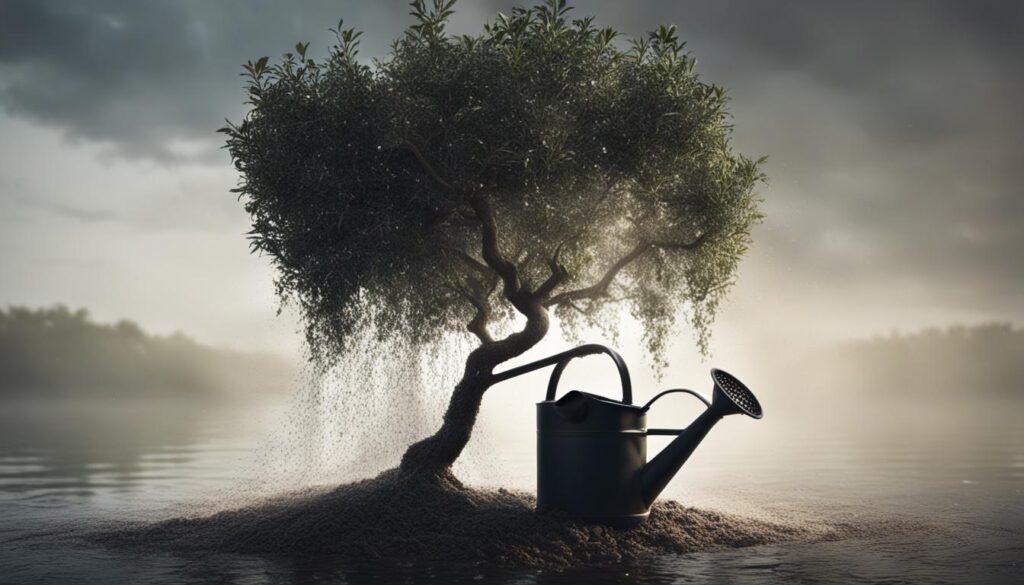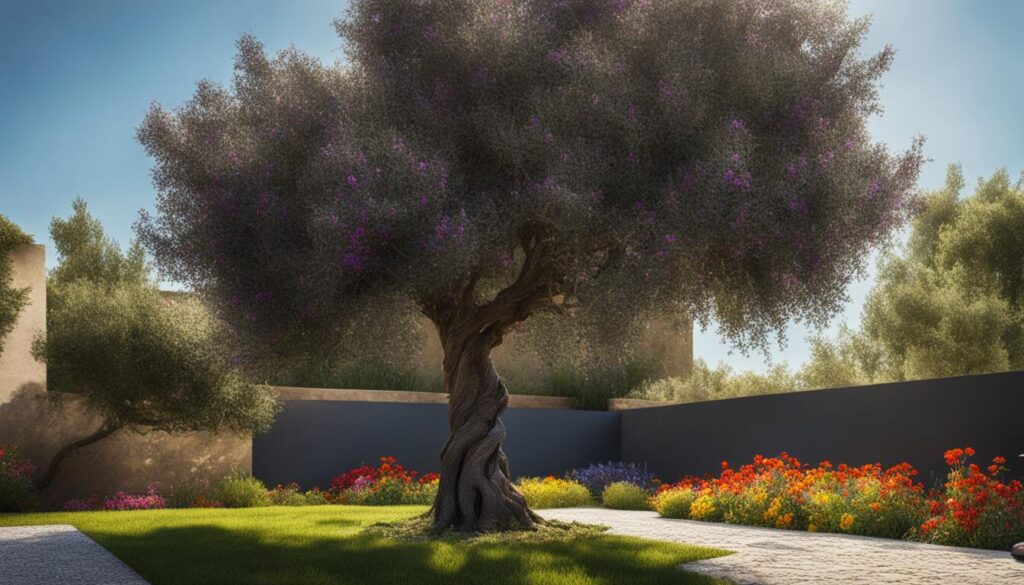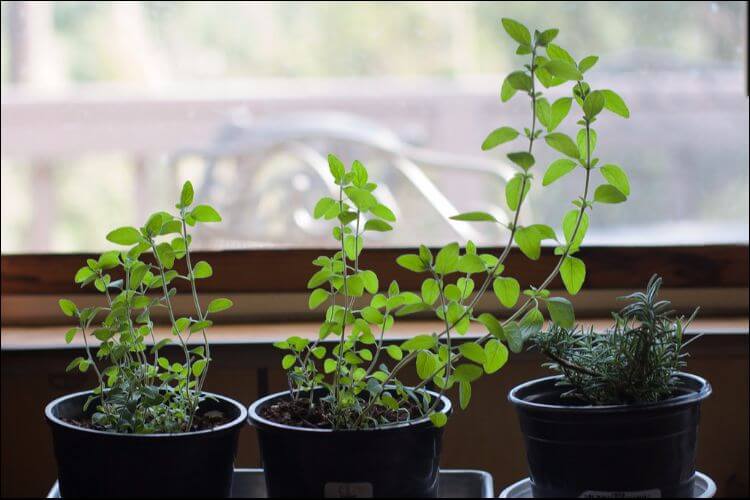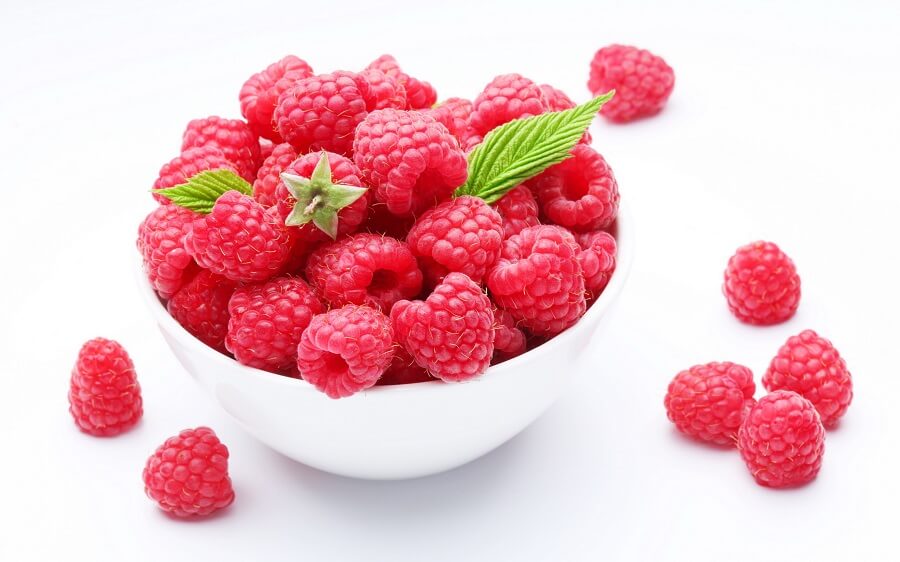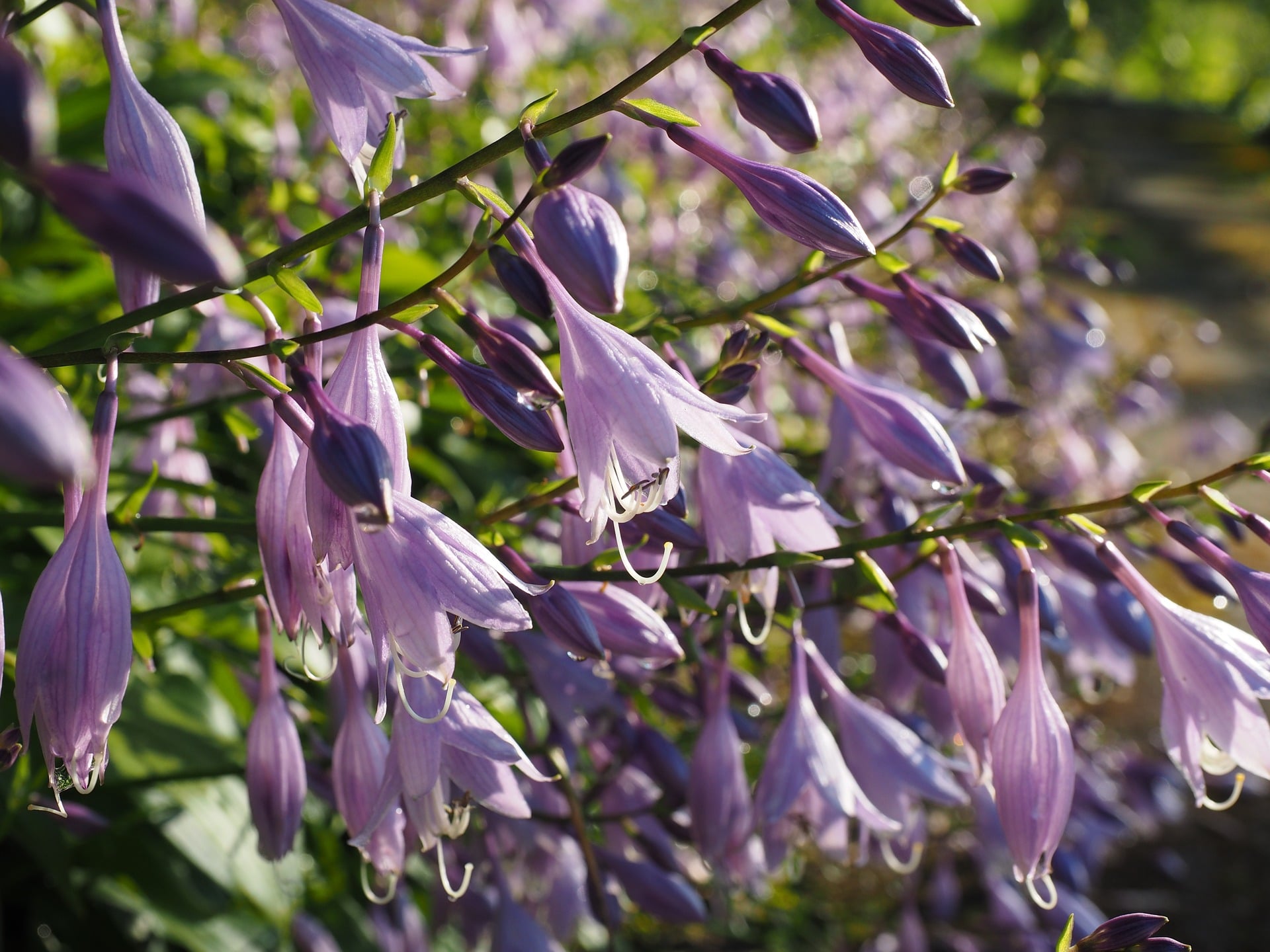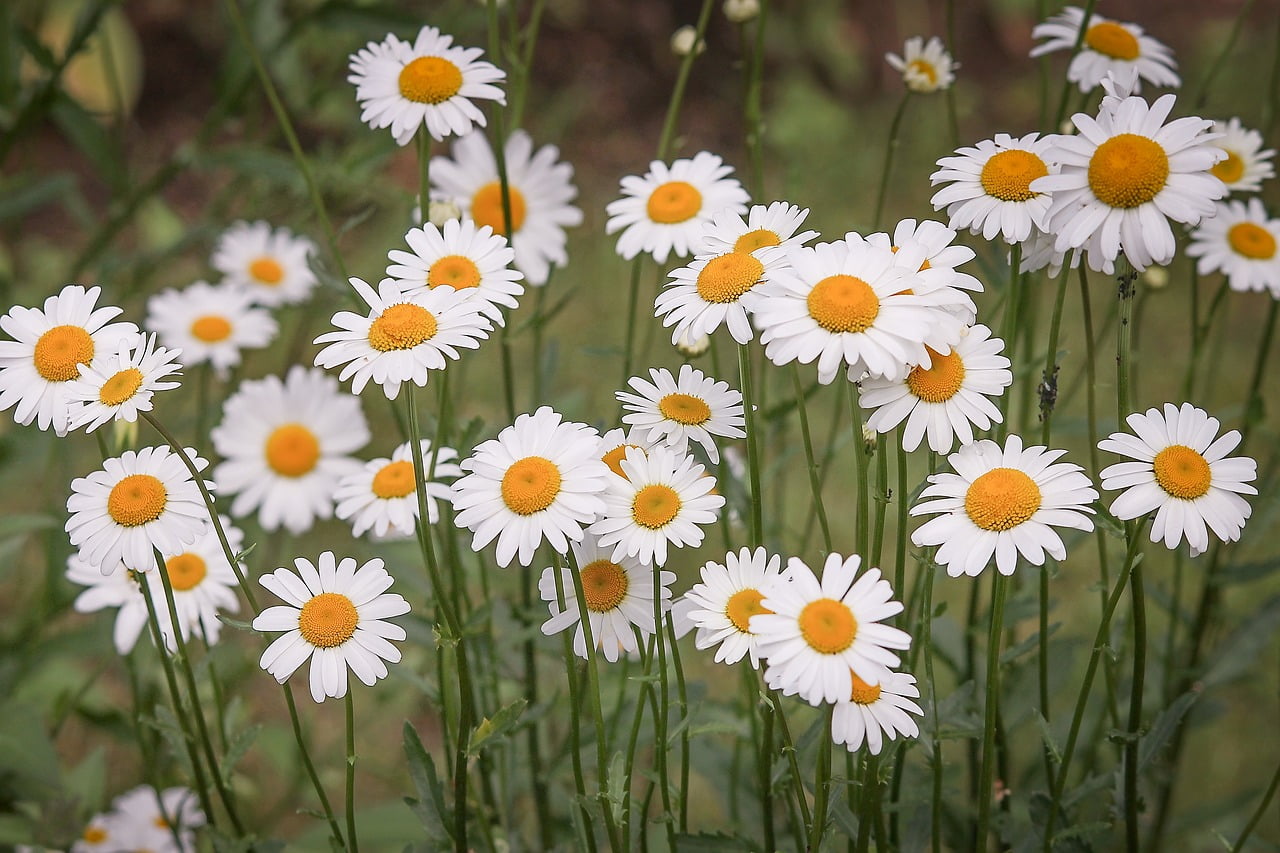The Black Olive Tree, also known as bucida buceras or Shady Lady Olive Tree, is a gorgeous indoor plant native to tropical regions. It is known for its dark, glossy leaves and durable bark. Despite its name, the Black Olive Tree does not produce any fruit, unlike the regular Olive Tree. It can be a great indoor alternative to the outdoor Olive Tree. To grow a Black Olive Tree at home, it’s important to provide it with proper light requirements, water it correctly, and address any common problems that may arise. Pruning and shaping, cleaning, and repotting are also essential for maintaining a beautiful and healthy Black Olive Tree.
Post Summary
- Growing a Black Olive Tree at home is a rewarding and relatively easy task.
- Provide the tree with proper light, ensuring it receives direct sunlight or bright indirect sunlight.
- Water the tree when the topsoil is dry, avoiding overwatering.
- Common problems include leaf drop, which is normal and can be addressed by providing more light.
- Maintain the tree’s health by pruning, cleaning, and repotting it every few years.
Light Requirements for Black Olive Tree
The light requirements for a Black Olive Tree are crucial for its growth and overall health. This beautiful indoor plant thrives in direct sunlight and requires adequate exposure to ensure proper development. Whether you choose to keep your tree outdoors or indoors, providing it with the right amount of light is essential.
If you decide to keep your Black Olive Tree outside, place it in an area that receives full sun or partial shade. Ensure that it is not obstructed by any structures or trees that may block the sunlight. On the other hand, if you prefer to keep your tree indoors, place it near a sunny window that receives at least a few hours of direct sunlight each day.
Remember, the Black Olive Tree is native to tropical regions, where it thrives in bright and sunny conditions. By mimicking these conditions in your home or outdoor space, you can create an ideal environment for your Black Olive Tree to flourish.
Key Points: How to Water Your Black Olive Tree
- Water your black olive tree when the topsoil is dry, typically every 5-7 days.
- Check the soil by sticking your finger into the soil up to the first knuckle – if it feels dry, it’s time to water.
- Water thoroughly, ensuring that water runs out of the drainage holes at the bottom of the pot.
- Adjust your watering schedule during winter months based on the tree’s needs.
By following these watering guidelines, you can provide your black olive tree with the proper hydration it needs to thrive and flourish in your home.
Common Problems with Black Olive Tree
Growing and caring for a Black Olive Tree can be a rewarding experience, but like any plant, it can encounter some common problems. Understanding these issues and knowing how to address them will help ensure the health and vitality of your tree. The most prevalent problem with Black Olive Trees is leaf drop.
Leaf drop is a natural occurrence for Black Olive Trees, especially during environmental changes or transitioning seasons. While it may be concerning to see leaves falling, it is important to note that new leaves will grow back in due time. However, if you want to expedite the regrowth process, there are a few steps you can take.
Firstly, make sure your Black Olive Tree is receiving adequate light. Adjust its position to provide more direct sunlight or consider using a grow light if necessary. Proper lighting will stimulate new leaf growth and promote overall tree health. Additionally, ensure that you are following the correct watering schedule and avoiding overwatering, as excessive moisture can contribute to leaf drop.
Common Problems with Black Olive Tree
| Problem | Solution |
|---|---|
| Leaf Drop | Provide adequate light and adjust watering schedule. Consider using a grow light. |
| Pest Infestation | Inspect the tree regularly for pests. If detected, use appropriate insecticides or seek professional advice. |
| Root Rot | Avoid overwatering and ensure proper drainage. Repot the tree if necessary. |
| Yellowing Leaves | Check for nutrient deficiencies and adjust fertilization accordingly. Ensure proper watering. |
While leaf drop is the most frequent issue with Black Olive Trees, other problems such as pest infestation, root rot, and yellowing leaves can also occur. Regularly inspect your tree for signs of pests and take appropriate action if necessary, using suitable insecticides or seeking professional advice. To prevent root rot, avoid overwatering and ensure your tree has proper drainage. If you notice yellowing leaves, check for nutrient deficiencies and adjust fertilization as needed.
By understanding and addressing these common problems, you can maintain a beautiful and healthy Black Olive Tree that will bring a touch of nature’s beauty to your home.
How to Maintain a Beautiful and Healthy Black Olive Tree
Proper maintenance is key to keeping your Black Olive Tree looking beautiful and thriving. Regular pruning, cleaning, and repotting will ensure its long-term health and growth. Here are some essential tips to help you maintain your Black Olive Tree:
Pruning and Shaping
Regular pruning is necessary to remove any dry or dead leaves from your Black Olive Tree. This not only improves its appearance but also helps prevent the spread of diseases. Use clean, sharp pruning shears to make clean cuts and avoid tearing the leaves or branches. Pruning should be done throughout the year whenever you notice any dead or damaged foliage.
Cleaning
Keeping your Black Olive Tree clean is important for its overall health. Dust can accumulate on the leaves, blocking sunlight and hindering photosynthesis. Regularly misting the leaves with water or wiping them gently with a damp cloth will help remove dust and keep the foliage looking fresh and vibrant. Additionally, keeping the leaves clean also prevents pests from taking up residence on your tree.
Repotting
Repotting your Black Olive Tree every 2-3 years is essential for its growth and overall health. Choose a pot that provides enough room for the roots to grow and has drainage holes to prevent waterlogging. Use a well-draining potting mix and carefully transfer the tree to its new container, ensuring that the root ball is intact. After repotting, water the tree thoroughly to settle the soil and promote new growth.
| Pruning and Shaping | Cleaning | Repotting |
|---|---|---|
| Remove dry or dead leaves throughout the year | Mist or wipe leaves regularly to remove dust | Repot every 2-3 years for optimal growth |
| Use clean, sharp pruning shears | Prevent pests by keeping leaves clean | Choose a pot with proper drainage |
| Prune to improve appearance and prevent disease | Ensure leaves receive adequate sunlight for photosynthesis | Use well-draining potting mix |
By following these maintenance tips, you can ensure that your Black Olive Tree remains healthy and visually appealing. With proper care, your tree will continue to thrive and bring natural beauty to your home or garden.
Conclusion
Growing a Black Olive Tree at home can be a rewarding and fulfilling experience in the realm of indoor gardening. By following the effortless steps outlined above, you can successfully cultivate and maintain a beautiful and healthy Black Olive Tree in the comfort of your own home.
Remember to provide your Black Olive Tree with the proper light requirements, ensuring it receives an adequate amount of direct sunlight. Additionally, be mindful of your watering schedule, allowing the topsoil to dry between waterings to prevent overwatering and potential root rot.
To maintain the tree’s aesthetic appeal and overall health, regular pruning and shaping are crucial. Remove any dry or dead leaves throughout the year. Don’t forget to keep your Black Olive Tree clean and dust-free by regularly misting it. And for optimal growth, consider repotting every 2-3 years to provide fresh nutrients and encourage new foliage.
Indoor gardening with a Black Olive Tree is a wonderful way to bring the natural beauty of tropical regions into your home. So go ahead, give it a try and enjoy the satisfaction of nurturing your very own Black Olive Tree to flourish and thrive.
FAQ
Can I grow a Black Olive Tree indoors?
Yes, the Black Olive Tree can be grown indoors as long as it receives adequate sunlight. Place it in a sunny window that gets a few hours of direct sunlight per day.
How often should I water my Black Olive Tree?
Water your Black Olive Tree thoroughly when the topsoil is dry, usually once every 5-7 days. During winter months, the watering schedule may be less frequent.
Why is my Black Olive Tree dropping leaves?
The Black Olive Tree is prone to leaf drop, especially during changes of environment or changing seasons. This is normal, and the leaves usually grow back with time. To speed up the regrowth process, provide the tree with more light by adjusting its position or using a grow light.
How do I maintain a Black Olive Tree?
To maintain a beautiful and healthy Black Olive Tree, prune and shape the tree by removing dry or dead leaves all year round. Keep the plant clean by regularly misting and repot it every 2-3 years to provide fresh nutrients and encourage new growth.
Are there any common problems with Black Olive Trees?
The main problem with Black Olive Trees is leaf drop. Other issues are relatively rare but can include root rot due to overwatering or pest infestations. Proper care and attention can prevent these problems.
Is Underplanting Olive Trees in Pots Necessary for Growing Black Olive Trees at Home?
When it comes to growing black olive trees at home, many experts recommend mastering underplanting olive trees in pots. This practice helps provide necessary nutrients, support proper drainage, and discourage weed growth. Additionally, underplanting can enhance the aesthetic appeal of your olive tree while supporting its overall health and growth.





